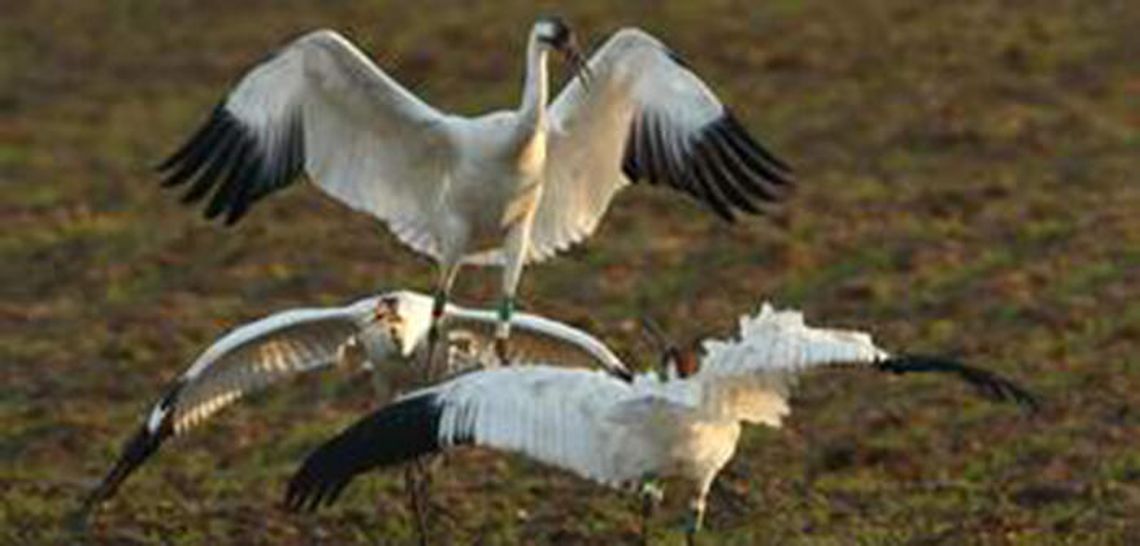[dropcap]T[/dropcap]here’s good news about whooping cranes. This year, some 431 birds have shown up at Aransas National Wildlife Refuge down on the Texas coast. This includes 50 juvenile birds and is quite an improvement over the number registered back in 1941.
In that year, the entire number of whooping cranes in the world totaled 15 birds.
In fact, if President Franklin Roosevelt had not created the Aransas refuge back in 1937, it’s a good bet the whooping crane would be extinct today.
Its slow recovery is one of the feel-good stories in bird conservation and an object lesson in what can be accomplished when people intervene on the side of wildlife.
The cranes breed in Canada and start arriving at the Texas refuge in mid-December. The flight down is 2,400 miles long.
Tallest of all North American birds, the whooping crane stands about five feet high and is a tall, stately bird. It is named for its loud, trumpeting call, which can be heard over long distances.
Adult whoopers ae snow white, with black wing tips, and young birds are a rusty brown. They dine on blue crabs and an occasional insect.
Crus Americana is the Latin name for this bird and if you want to see it up close, there are crane-watching boat trips out of Rockport-Fulton. I was pleased with the trip I made and the captain’s narration was informative and entertaining.
Unfortunately, the visitor’s center at the 153,950-acre refuge was damaged by Hurricane Harvey and has not reopened. However, the refuge is open and there is no admission charge.










